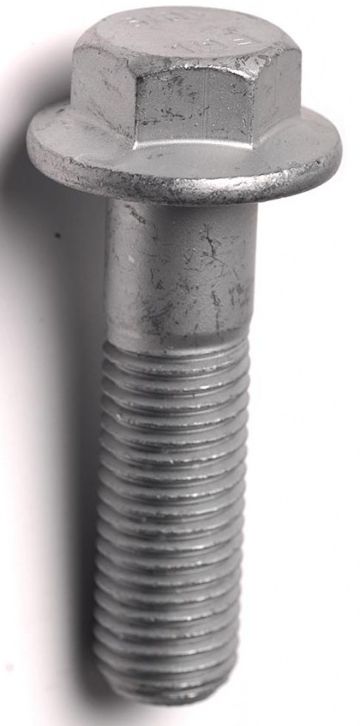In the mast business, flange connections are basically standard. The flanges are related to the strength of the entire structure, which depends on the screws connecting them. Each of us knows that screws come in specific strength classes. For ordinary people, classes differentiate the price of the same screw, but what do we get in return? Let's take a look at the technical details (quote from marmech.eu)
The strength of the screw is indicated by a two-digit symbol, e.g. 5.6, 8.8, 12.9 and similar.
How to read the markings on screw heads:
For example, class 5.6:
- the first digit isvalue of the tensile strength limit Rm- here5x 100 MPa = 500 MPa
- the second digit isvalue of the yield pointReexpressed as a percentage of the tensile strength Rm – here:6x 0.1 x 500 MPa = 300 MPa
In this example, we can decipher the class of mechanical properties of the screw as follows: tensile strength Rm = 500 MPa and yield strength Re = 300 MPa.
Of course, the higher the numbers in the markings, the greater the strength of the screw.
What does it mean?
Yield strengthReis the value of stress beyond which the screw will begin to stretch plastically - in other words: if the load is lower than this value, the screw will stretch elastically, and then after removing the load it will return to its original length.
The limit of enduranceRm– this is the stress that the screw can carry while plastically deforming until it breaks completely.
How long will the screw last?
The concept of "how much we can hang on such a screw" is more appealing to the imagination than the stress values. We must remember that 1 MPa = 1 N/mm2= 0.1 kg/mm2, hence a class 5.6 bolt will have the following parameters: Rm = 500 MPa = 50 kg/mm2and Re = 300 MPa = 30 kg/mm2. This means that on every 1 mm2cross-section of the bolt, we can hang 30 kg before the bolt begins to elongate, and a maximum of 50 kg can be hung before it breaks completely.
For example, an M6 screw is approximately 20 mm2cross-sectional area, so on a class 5.6 screwWe can hang it "safely".30kg/mm2x 20 mm2=600 kg and the maximum this screw can carry50kg/mm2x 20 mm2=1000 kg before it breaks.
A2 type stainless steels are marked with the following symbols:
- A2-70 – A2 stainless steel, Rm 700 MPa, Re 450 MPa;
while acid-resistant steels type A4:
- A4-80 – A4 acid-resistant steel, RM 800 Mpa, Re 600 Mpa

